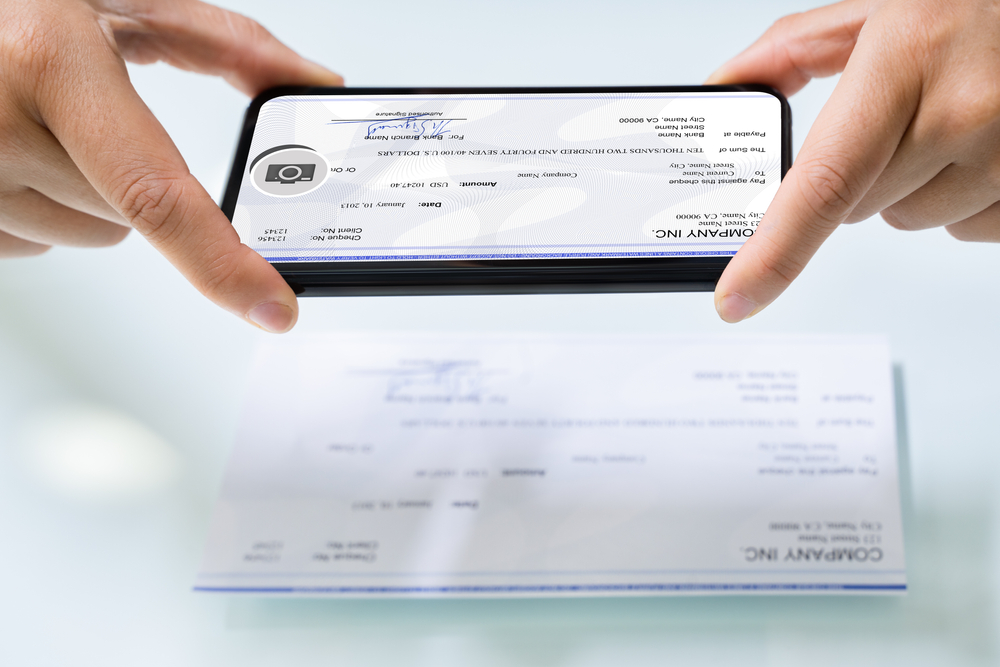Is Check Fraud Putting mRDC at Risk?
- Balancing fraud prevention and customer experience is becoming very difficult
- Some large banks are responding by reducing mobile deposit limits and adding longer holds
- Consumers now expect fast, seamless banking and will likely not tolerate delays and limits

Mobile Remote Deposit Capture (mRDC) has been around for decades. It is the most convenient method for individuals and some businesses to deposit checks. This method became crucial during the pandemic, as many smaller financial institutions and credit unions quickly adopted the technology to ensure that their customers were able to deposit checks without needing to risk being out in public.
However, mRDC comes with inherent risks. Financial institutions do not know who is making the deposit. Furthermore, FIs are only receiving an image of the check, making it difficult to ascertain if it is legitimate. Heck, we've even seen law-abiding citizens dip their toes into check fraud, as many were struggling to get by.
This has lead to FIs facing a major challenge, as noted by The Financial Brand -- how to prevent fraud while maintaining a positive customer experience. This has led some institutions like Fidelity to tighten policies by reducing mobile deposit limits and adding longer holds. However, these measures can frustrate customers who have come to expect fast, seamless banking.
David Donovan, EVP and head of financial services at Publicis Sapient, notes:

The surge in digital fraud schemes, such as mobile remote deposit capture (mRDC) fraud, is pushing banks and financial institutions to make tough policy choices. “Institutions are taking a proactive stance, not just reacting to current fraud patterns, but anticipating more sophisticated schemes on the horizon,” Donovan says.
Balance Between Risk Management and Customer Experience
FIs need to take a collaborative approach to challenges like this. The article from The Financial Brand notes that "Marketing and CX teams need to be actively involved in the decision-making process for deposit policy changes, while fraud teams should be part of the discussions on new products or services before going live."

Additionally, banks are turning to emerging technologies like AI and machine learning. These tools analyze data to quickly detect fraud without burdening customers. Advanced analytics can also enable personalized risk assessments rather than blanket policies. By adopting these innovations, banks can improve their fraud detection while offering customers faster access to their funds and a high level of protection.
AI, biometric verification, and predictive modeling are tools that can analyze vast amounts of data, helping banks more quickly detect anomalies and red flags without always needing to directly burden the customer through holds and limits on their accounts. According to the Association of Certified Fraud Examiners (ACFE) and SAS’s 2024 Anti-Fraud Technology Benchmarking Report, 83% of anti-fraud professionals plan on adding this technology to their toolkits in the next two years, with 51% of banks already implementing physical biometrics.
“Emerging technologies like AI and machine learning are game-changers in fraud detection, enabling banks to shorten check hold periods without increasing risk,” says Mr. Donovan. “AI-driven analytics can detect anomalies in real-time, providing faster and more accurate fraud identification than traditional methods.”
However, these technologies can do much more, as OrboGraph has proven. AI and machine learning technologies are the backbone of image forensic AI for check fraud detection. As we all know, analyzing the behavior of an account is only one part of check fraud detection. If FIs are not actively analyzing the images of checks, they are unable to detect a majority of counterfeits, forgeries, and alterations.
As fraudsters continue to evolve their tactics and schemes, FIs may not need to update their policies and add more restrictions as long as they have the right tools in place to detect check fraud. These technologies will not only protect the FI, but also increase customer satisfaction by preventing more fraud losses to their customers.